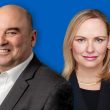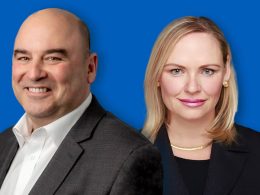January 30, 2013
by Brad Sorensen, CFA, Director of Market and Sector Analysis, Schwab Center for Financial Research
Key Points
• As expected, no changes were made to Federal Reserve monetary policy at its latest meeting. The Federal Open Market Committee (FOMC) kept its asset purchase program in place and interest rates at near zero.
• The makeup of the FOMC has changed with the traditional rotation at the start of the year. The major hawk and lone dissenter on many recent decisions has rotated off the voting committee, along with three others. Their replacements may be slightly more dovish and we don't expect many changes in philosophy, but there is a new dissenter.
• With economic improvement continuing and some of major risks seemingly subsiding, chatter is increasing that a start to return to monetary normalcy may come sooner rather than later, although at this point it's likely to be a slow go.
In its first meeting of 2013, the Federal Reserve provided no surprises by keeping its current monetary policy in place. The Fed will continue to purchase $40 billion per month in mortgage-backed securities, while also purchasing $45 billion in longer-term US Treasury securities in order to "support a stronger economic recovery."
Additionally, the target range for the fed funds rate remains at 0%-0.25% and the Fed continues to believe that rate will be appropriate "at least as long as the unemployment rate remains above 6.5%." The Fed also acknowledged softness in the economy during the fourth quarter (as seen in the negative 0.1% gross domestic product figure released today by the Commerce Department), but attributed it to mainly "transitory" factors such as weather, while also noting better household spending, business fixed investment and a further improvement in the housing market.
With no new economic forecasts and no press conference after this meeting, it's no surprise the Fed made few changes to its statement. One note was the absence of what had become the traditional dissenting voice in the form of Federal Reserve Bank of Richmond President Jeffrey Lacker, who rotated off the voting committee along with three other members. Their four replacements are generally considered a bit more dovish, but we don't believe that any change in the current direction of the Fed, which is largely framed by Chairman Ben Bernanke, will result. However, Federal Reserve Bank of Kansas City Esther George, one of the new voting members, replaced Lacker as the lone dissenter.
Will improvement lead to changes sooner rather than later?
After this meeting, it seems to us the major question on Wall Street remains the same: "When will the Fed start to reverse course?"
There's been increasing commentary among Fed members beginning to broach the subject of when and how they may start to unwind their current policy accommodation. With inflation still appearing relatively tame, and especially with wage-based inflation remaining absent, there doesn't appear to be a lot of pressure on the Fed to make a move toward accommodation removal.
Chairman Bernanke is a noted student of the Great Depression, and has expressed his belief that central banks around the world in similar situations have made the mistake of abandoning their easing policies too soon. It seems to us he'd be willing to tolerate a little higher inflation rate in order to have the chance to better ensure the unemployment rate continues to drop.
However, there are other members of the Fed who've noted actions they could start to take to remove some of the accommodation without touching interest rates, and that may start to occur sooner rather than later. The Committee noted that it will take a "balanced approach" to the removal process, although what that actually means in practice is unknown at this point.
First step: Stop buying assets
In our view, the most obvious first action would be to stop at least one, if not both, of the current streams of asset purchases. Of course, given the desire of the current iteration of the Fed to be more open, we would likely hear quite a bit of commentary coming out of the Central Bank alluding to that possibility before the actual decision was actually announced.
And while the path may seem to be clear, it's important to remember that some of the risks the Fed was concerned with toward the end of last year still exist, even if their urgency may have diminished. The Fed is still assessing the impact of the payroll tax hike on virtually all working Americans, while also looking ahead to the coming fights over the spending sequestrations and the debt ceiling, and what the impact of these issues may be on the economy. These risks, combined with Bernanke's fear of moving too soon and the lack of inflationary pressures, may result in the Fed staying at the table longer than current data suggests they need to.
We continue to advocate a slow but steady return to a more normal monetary position, as it's now quite clear to most observers that we're no longer in a financial crisis that current policy was put in place to fight. Additionally, jobs continue to be added, housing is now contributing to economic growth and manufacturing appears to be expanding—allowing, in our view, a more normal policy.
Copyright © Schwab.com













